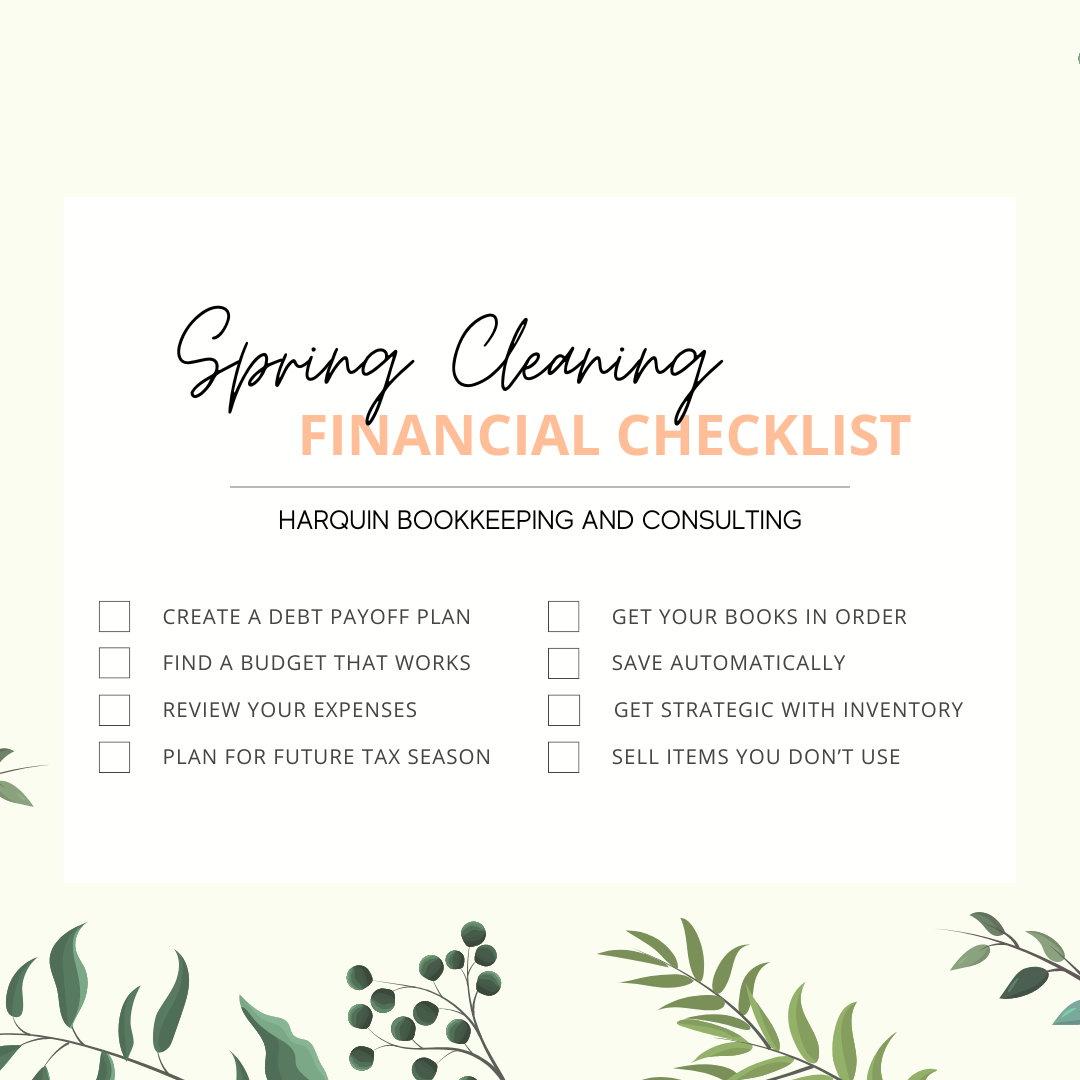Financial Spring Cleaning Checklist
Spring cleaning your home is such a good feeling - it refreshes and enlivens your life and environment in a special way. The same goes for financial spring cleaning! Make a date with your spouse and your financial team and work through the checklist for a clean sweep and peace of mind. Set yourself up for greater success in 2024 and beyond.
1. Create A Debt Payoff Plan
Spring is the perfect time to eliminate any lingering high interest debt from your life. There may be opportunities to consolidate it or possibly transfer the balance to a 0% promotional opportunity. There is no reason to pay 15-20% on credit card debt if you can avoid it. The best way to get out of debt is to create a debt payoff plan. If you haven’t been making as much progress as you’d like to, call in extra support. Work with a financial expert who can walk through the process with you. We can help - learn more here.
2. Find a Budget That Works
A budget helps you make sure your spending reflects your current circumstances, your values in life and business goals. It gives you the control. Try to revisit every category in your spending plan, and decide what changes might need to be made.
If you feel like your current budgeting system just isn’t working for you, try testing out one these budgeting apps using different budgeting methods. If you need to bring in the big guns, hire a budgeting consultant who can create a budget with you based on your actual financial reports - real data for real results. Learn more here about our Budgeting Breakthrough.
3. Review your expenses
Spring clean extra or unnecessary expenses! Now is a great time to cut wasteful spending, like memberships and subscriptions that you don’t use, and assess lifestyle choices that could be draining your account - like eating out too much. Every little thing adds up. Don’t be afraid to make changes.
Freeing up cash from unnecessary expenses can give you freedom to invest more in areas that are more meaningful for you - your family, investing for your future and scaling your business.
4. Plan for Future Tax Season
It’s worth considering what you may owe in taxes and setting that aside so you're not scrambling during tax season. Work with your CPA and they can give you quarterly estimated tax payment coupons.
If you create an “expense” and set that money aside and don’t touch it until tax time whatever is left you keep either by putting back into the business or keep the profits. If you owe more than what you allocated it’s less of a financial burden than as if you weren’t saving it the whole time. It’s all about the mindset shift though. You can’t view it as an emergency fund to dip into mid year.
5. Get your books in order + set up systems
The tax deadline has passed. Now it’s time to get organized and really start to understand your numbers this year so you can use your data to direct your inventory buying, the direction you take your business and to increase profits as you see what’s working and what’s not working.
1. Choose your receipt system (either digital or envelopes). Doesn’t matter which one just be consistent.
2. Delegate tasks and responsibilities. Don’t wait until the end of the year to get a good CPA. Find one now and make sure you have your bookkeeping and tax filing with two different people (you don’t want to pay CPA prices for bookkeeping, either).
3. If you’re a HarQuin client, don’t miss the monthly Reports Trainings so you can learn how to understand your reports.
6. Save automatically
After checking your budget, you may see some more opportunities to boost your savings. If you’re paying yourself you may be able to arrange to automatically deposit some of your paycheck to a savings account every time you pay yourself, instead of all of it going into a checking account. You can also check with your bank to see if you can set up automatic transfers.
7. Get Strategic with Inventory
If you use Shopify, the analytics and reporting tab can be your best friend. By using the behavior reports and the ABC analysis by product you can see what products are working and what aren’t. This can help you when you go to buy inventory so you’re not left with an excess of extra products to destash. If you're buying more than you need from the start you're going to need to get rid of more. So you want to consider if you're buying based on data or just winging it. You want to be strategic in your buying.
Remember inventory is cash on hangers. Do what you need to do to get it out. You can do sales, pop-up events partnering with other local businesses, and other creative ideas to move it out.
8. Sell Home/Closet Items You Don't Use
Look beyond your business and into your home. Every area of your life affects your finances and vice versa. Free up space in your home and your mind by selling things from around your house that you no longer use. You’ll feel more focused, and it can bring in some extra cash that will get you closer to your money goals. Craigslist, eBay, and Facebook Marketplace and buy/sell/trade Facebook groups can move things out and give hundreds or even thousands you hadn’t planned on.
In closing…
Spring cleaning your finances isn’t just about organizing receipts or trying to spend a bit less each month. It’s about building a legacy and heading into the rest of the year feeling refreshed about your finances.
If you need to outsource your bookkeeping to the experts, we can lift that burden for you. Get a free estimate at www.harquinbookkeeping.com/estimate. Be encouraged because you’re putting in the hard work so you can get ready to watch your financial health blossom!


